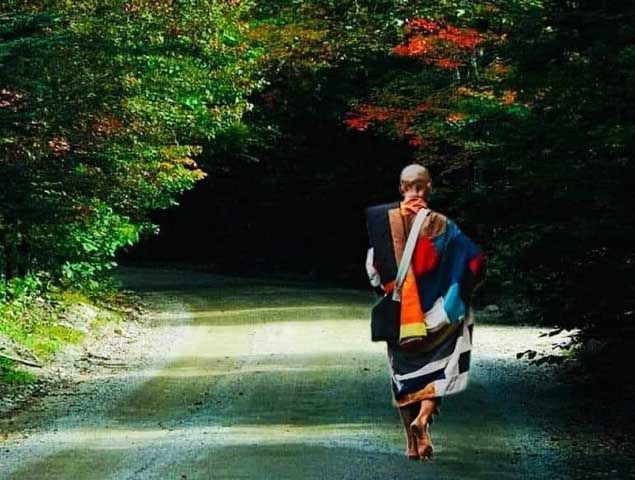In an age dominated by technology, consumerism, and digital noise, a barefoot monk silently walking along Vietnam’s roads has captured the nation’s imagination. Thich Minh Tue, a humble Buddhist ascetic, has become a phenomenon—not through speeches or social media strategies, but simply by walking. His journey, which began as a quiet act of devotion, has now transformed into a nationwide spectacle, with thousands seeking to glimpse the man whose life embodies simplicity, faith, and resilience.
The Beginning of a Pilgrimage
Born as Lê Anh Tú in 1981 in Hà Tĩnh, Vietnam, Thich Minh Tue’s path to spiritual awakening was anything but ordinary. After serving in the military and working as a land surveyor, he felt an unshakable calling to leave behind worldly possessions and immerse himself in Buddhist teachings.
By 2015, he had fully embraced the monastic path, taking the dharma name Minh Tue. But unlike most monks who reside in temples, he chose a more radical, ancient approach—living as a wandering ascetic, practicing Dhutanga, a rigorous form of self-discipline emphasizing detachment from material comforts.
Armed with nothing but a saffron robe, an alms bowl, and an unshakable faith, he began walking. And he never stopped.
The Journey That Stopped a Nation
For years, Thich Minh Tue walked the length of Vietnam, moving from village to village, subsisting only on food offered by strangers. He never begged, never asked for shelter, and never carried money. He ate once a day, slept outdoors, and remained steadfastly silent as curious onlookers gathered to watch him pass.
At first, he was just a wandering monk, another anonymous figure blending into the country’s spiritual landscape. But in 2024, something changed.
A video surfaced on social media—grainy footage of a lone monk walking through the countryside, his head bowed in meditation, his robe fluttering in the breeze. Within days, it went viral. Soon, thousands were waiting along highways, holding food offerings, hoping to see him, to touch his robe, to catch a glimpse of the modern-day pilgrim.
Motorcycles and cars trailed behind him, forming long convoys of followers. Others walked alongside him, seeking spiritual guidance without words. Farmers left their fields, city dwellers abandoned their offices, all drawn by an inexplicable force—an urge to witness something pure in a world that often felt chaotic and materialistic.
Thich Minh Tue, without speaking a single word, had sparked a national movement.
The Mystery and the Message
As his following grew, so did the questions. Who was this man? Why was he walking? What was his message?
Unlike other spiritual leaders who preach from temples or stages, Thich Minh Tue’s silence became his most powerful sermon. His actions embodied a lesson deeper than words—a return to simplicity, detachment, and inner peace.
But his growing fame also brought challenges. Authorities, worried about massive crowds disrupting public order, attempted to manage the situation. Some feared he would be exploited by opportunists seeking to capitalize on his influence. Others saw in him a mirror reflecting the growing disillusionment with wealth-driven religious institutions.
Despite all this, Thich Minh Tue remained unchanged. He continued walking, undeterred by cameras, controversies, or the chaos left in his wake.
A Journey Without End
As 2024 drew to a close, Thich Minh Tue embarked on his most ambitious pilgrimage yet—a journey to India, the birthplace of Buddhism. Crossing borders on foot, he faced extreme weather, visa challenges, and political obstacles. Yet, he pressed on, his feet carrying him toward the sacred land where the Buddha once walked.
His story is still unfolding, and no one knows where the road will lead him next. But one thing is certain: his journey has ignited a conversation about faith, materialism, and the power of one individual’s unwavering commitment to a path.
For those inspired by his journey, platforms like Destplore allow travelers to embark on their own meaningful explorations—whether walking the spiritual trails of Vietnam, tracing the footsteps of history, or uncovering hidden cultural gems. Because sometimes, the most extraordinary journeys begin with a single step.




